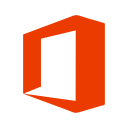What is Robotic Process Automation?
Robotic process automation (RPA) is the use of software with artificial intelligence (AI) and machine learning capabilities to handle high-volume, repeatable tasks that previously required a human to perform. It allows employees in a company to configure computer software or a “robot” to capture and interpret existing applications for processing a transaction, manipulating data, triggering responses and communicating with other digital systems.
What distinguishes RPA from traditional IT automation is RPA software’s ability to be aware and adapt to changing circumstances, exceptions and new situations.
Once RPA software has been trained to to capture and interpret the actions of specific processes in existing software applications, it can then manipulate data, trigger responses, initiate new actions and communicate with other systems autonomously. Large and small companies will be able to reap the benefits of RPA by expediting back-office and middle-office tasks in a wide range of industries, including insurance, finance, procurement, supply chain management (SCM), accounting, customer relationship management (CRM) and human resource management (HRM).
Benefits: Cost and Speed: On average, an RPA robot is a third of the cost of an FTE (although different models may vary between vendors). Beyond the obvious rate of pay, an RPA does not need to take breaks or require benefits. In fact, your robots will work 24/7/365, even when everyone else is sleeping.
Scalability: A robotic workforce can be as large or as small as you need it to be, and additional robots can be deployed quickly for no extra cost, or at worst minimal expenditure. Better still, you can train tens, hundreds or thousands of robots at exactly the same time through workflow creation.
Accuracy: RPA eliminates human error, as robots have unlimited attention spans, and don’t make mistakes in their calculations. When a robot encounters a transaction that does not fit its rules or parameters, the transaction is set aside for a human to complete later.
Analytics: RPA software is designed to return a great deal of performance data in the form of key analytics. You will know what your robots are doing at all times, how many transactions have been processed, how many exceptions were set aside, and so on. This data can help you to identify bottleneck areas or ways to streamline a process
Monitoring and alerts: Robotic Automation tracks transaction successes and failures, the number of transactions and wait times, and the status of each robot. It provides alerts when there’s a need for manual supervisor involvement




















